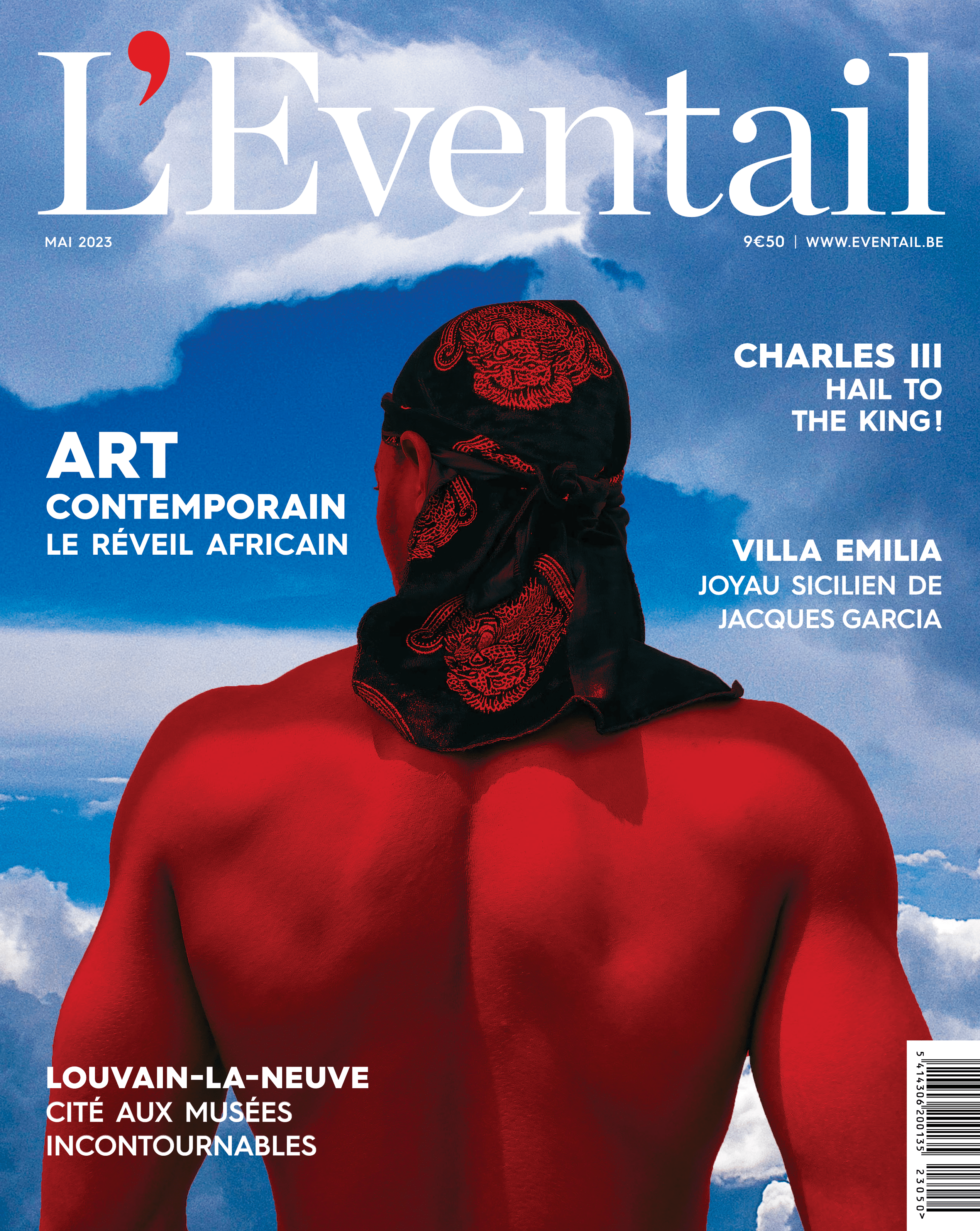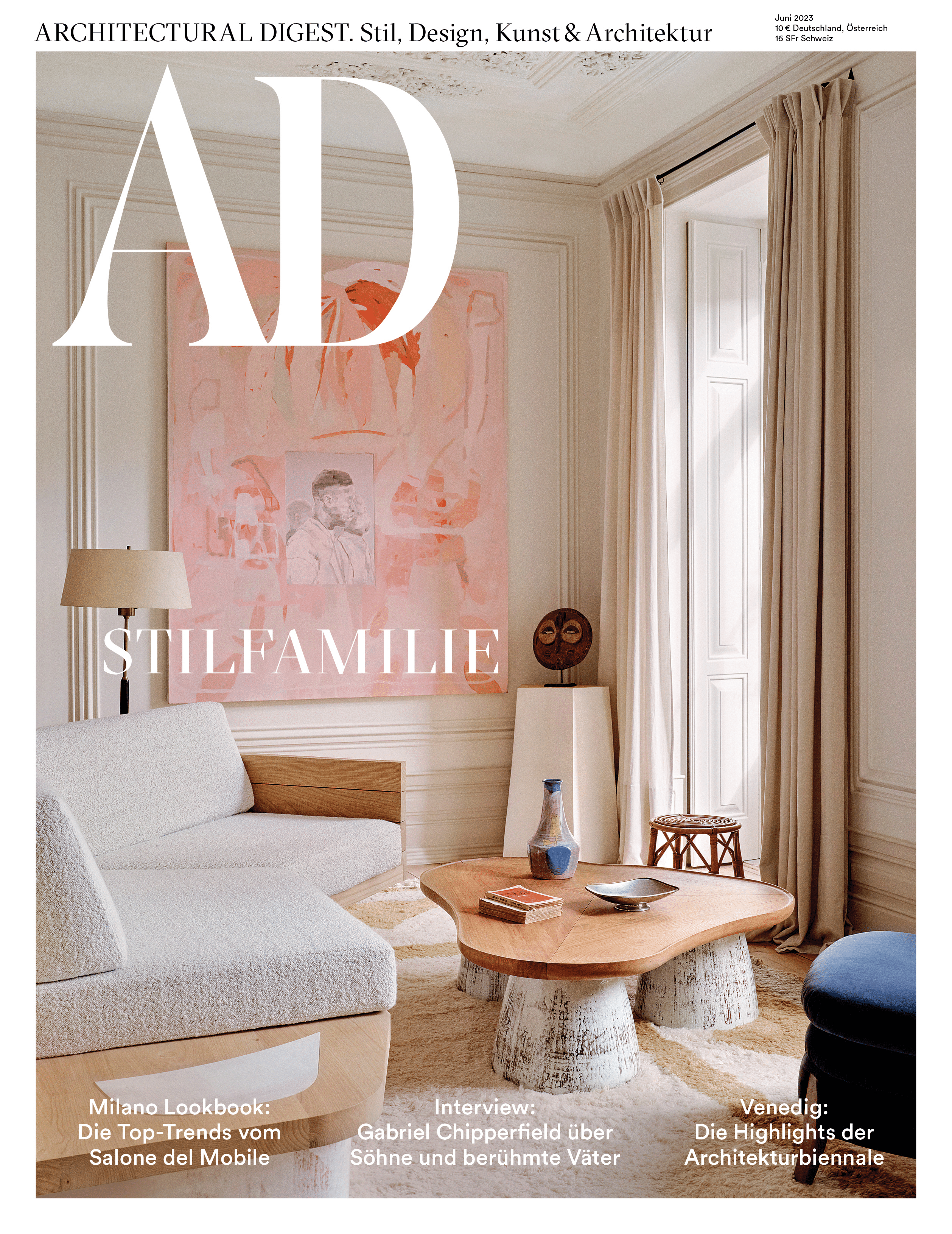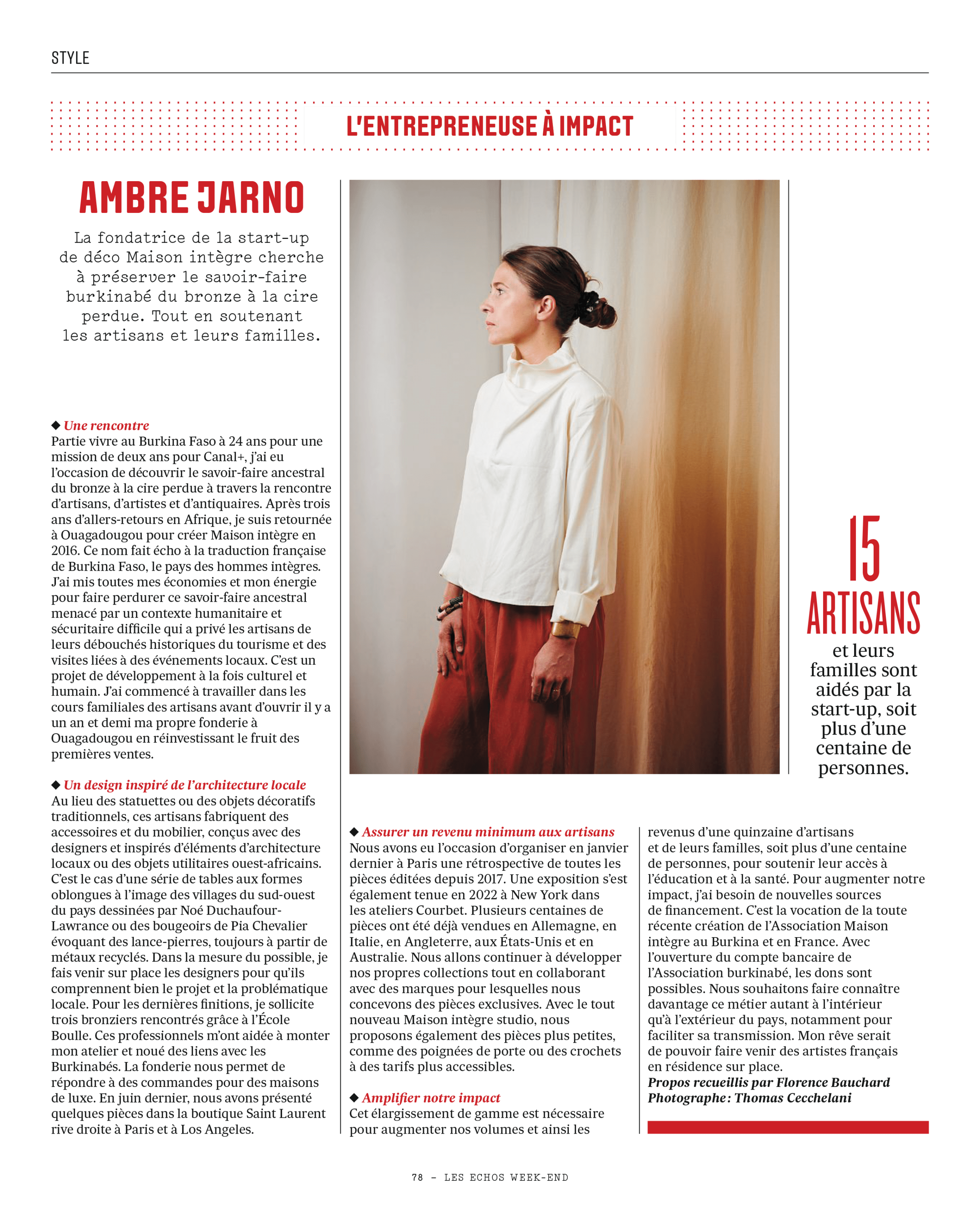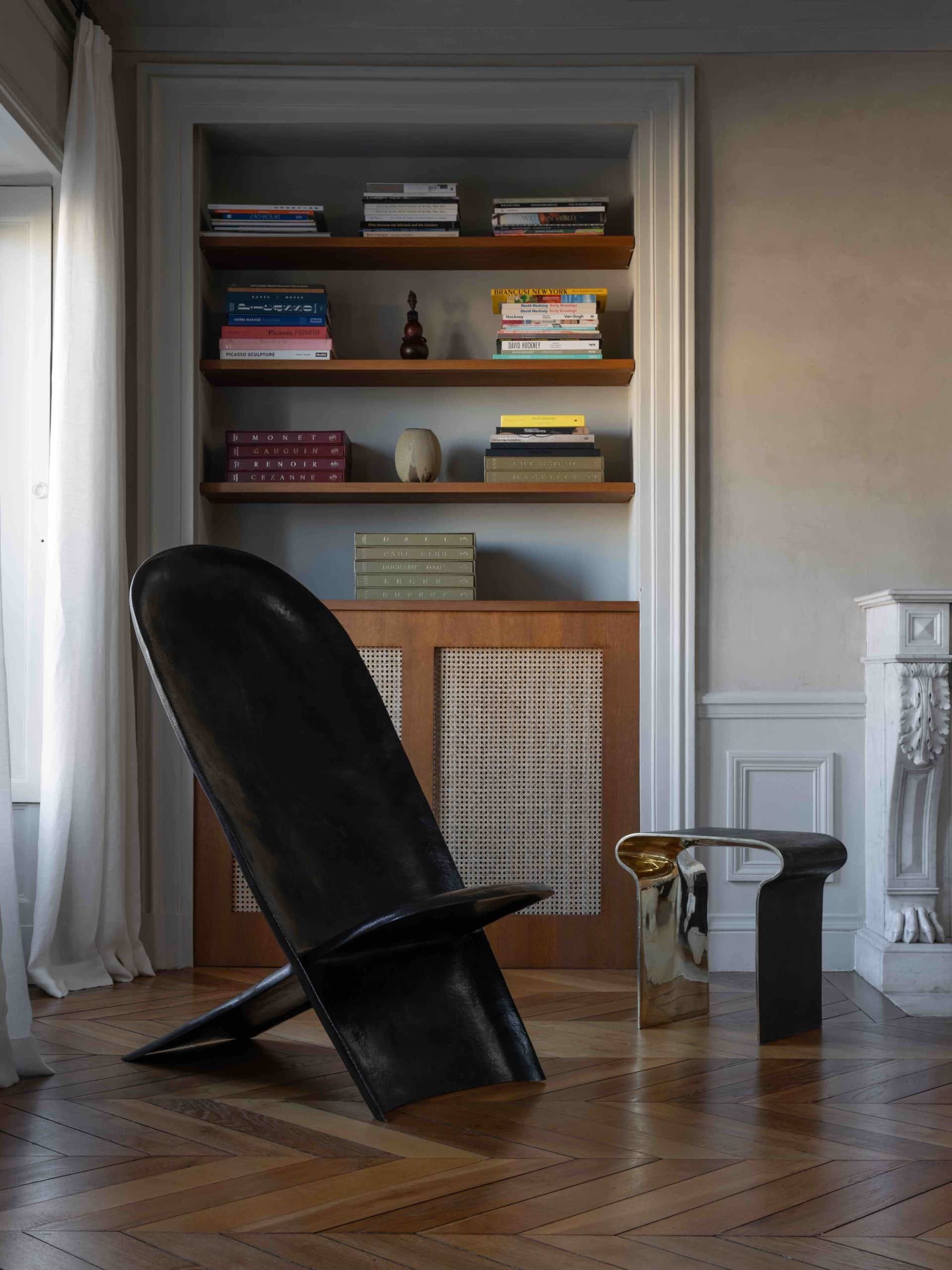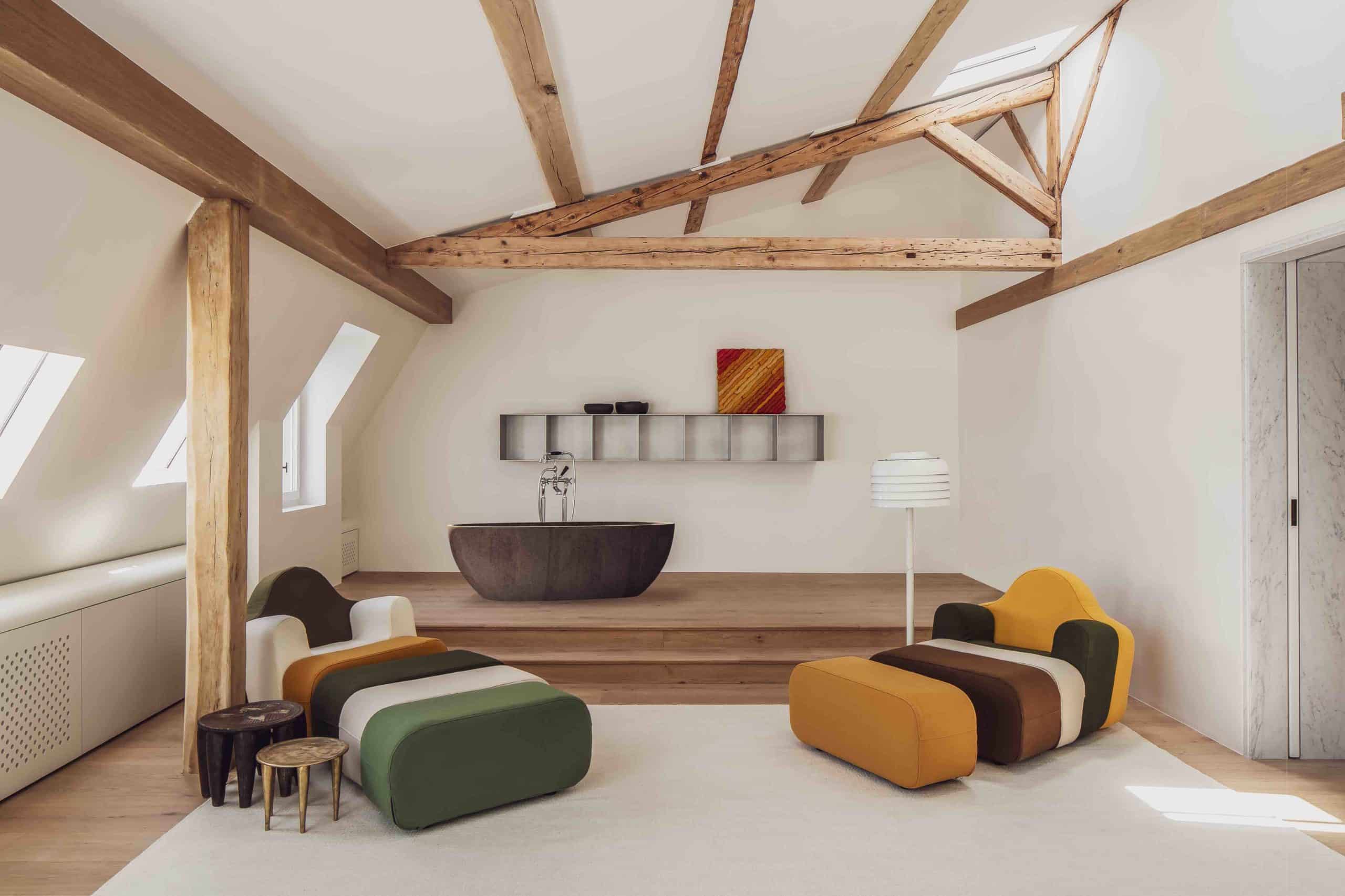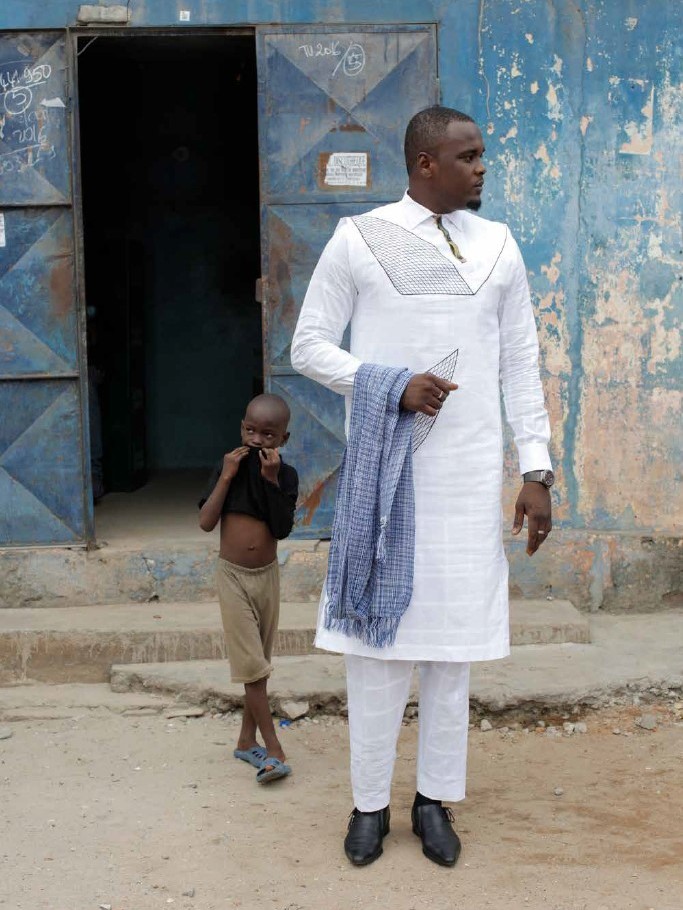INTERIOR PIECES
INTERIOR PIECES
Fragments of interior stories where Maison Intègre has settled for a while...
EXHIBITION BY ANNE SIROT AT ATELIER LARDEUR
Anne Sirot invited Maison Intègre to organize a duo exhibition with artist Chloé Leveque.
Chloé Levesque’s ink and pencil drawings and Maison Intègre’s bronze pieces come together in the Atelier Lardeur, a former stained glass workshop nestled in a courtyard in Paris’s 6th arrondissement, a place charged with history and light.
From May 26 to June 2, 2024
©Marion Saupin
UNIQUE INTERIORS BY RODOLPHE PARENTE
Ingenuity, sensitivity to craftsmanship, expressive materials, a certain fantasia and openness to contemporary uses are distilled and sublimated in the projects of designer-architect Rodolphe Parente. They all reveal a desire for the imaginary, for contrast and precision, for a constantly reinvented modernity. His creations embody a luxury tinted with lightness, encourage curiosity and honor art.
©Claire Israel
THE VISION OF HELENE VAN MARCKE BY THOMAS DE BRUYNE (CAFEINE)
Interior designer Hélène Van Marcke has transformed a Parisian “chambre de bonne” into a penthouse on Avenue Marceau. The architecture remains sober and timeless, allowing the stunning art and design collection to add color to the rooms. A mesmerizing mix of African elements by Maison Intègre and more avant-garde pieces by Van Severen, Paulin et Charpin, Gino Sarfatti...
©Thomas De Bruyne (Cafeine)
RAPHAËL ET NOËLIE SAWADOGO
RAPHAËL AND NOËLIE SAWADOGO
Designers and weavers

“I learned to dye and I liked it, I love creating!”
Raphaël Sawadogo has already lived more than ten lives. In wood craftship, in certification, abroad, he worked in many different jobs, sometimes very well paid, until becoming an employee of a weaving workshop. “I was the boss’s right-hand man, a long-time friend, I helped him in particular with administrative management.” Then his friend tells him of an imminent departure to the United States and the closure of the workshop. “I was in danger!”. It was four years ago. He decides to learn dyeing, and it’s a revelation. “I really like it, and it provides a living for my family.”
At his side, Noëlie, his wife, creates and weaves the prototypes. The couple is settled in the courtyard of their house in Cissin, Ouagadougou. A 10-meter loom is there, carrying the threads of the creation in progress.
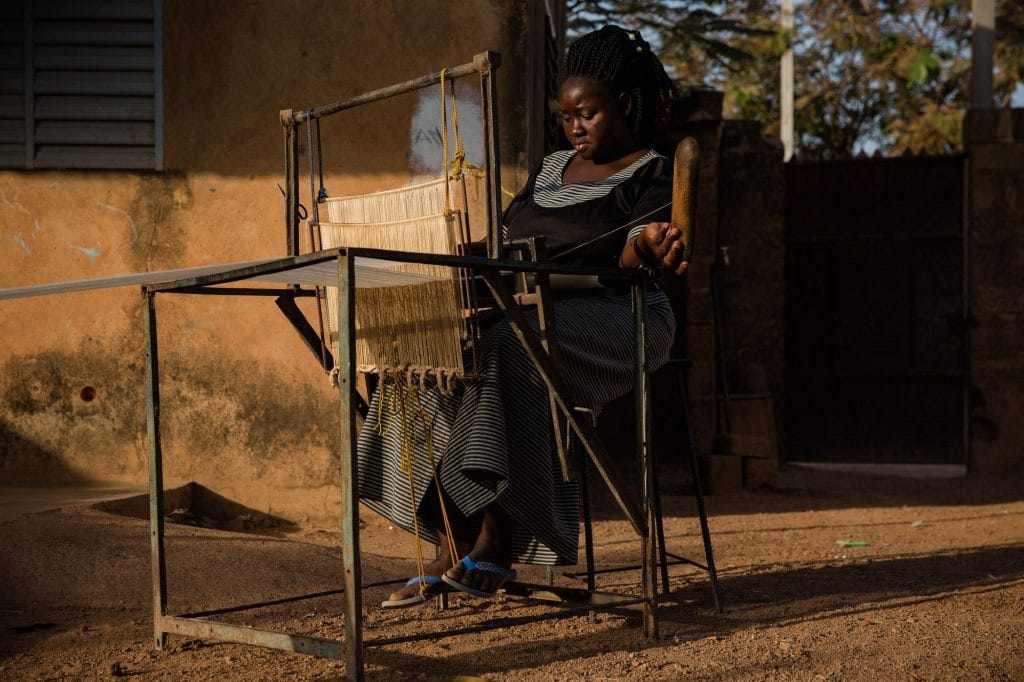
“We weave Faso dan Fani, from local cotton, organic one as often as possible.”
Faso dan Fani, which has returned to fashion thanks to the national preference given to local creations, has not generated any increase in activity among them. “But we have added value: we weave 40 thread, while the others weave 20.” A much finer and more elegant thread than the traditional dan Fani, which may be a little heavy to carry sometimes.
Raphaël and Noëlie also rely on sobriety to differentiate themselves: “no golden threads here, nor garish patterns”. In fact, their loincloths are either “dirty white”, that is to say ecru, or pastel colors. Because Raphaël favors the natural dyeing of his yarn, based on leaves, roots, bark or stones. And even when he has to use chemical dyes for financial reasons, he sticks to a range of colors close to those obtained by natural dyes. Once the yarn has been cleaned by boiling, the pattern created by Noëlie and the prototype woven, four women will weave the loincloths which will be sent to customers.


Raphaël works with individuals but also couturiers, and not the least. François 1er, a renowned Burkinabè designer, was seduced by the finesse of his Dan Fani and the delicacy of his patterns. “And we are among the only ones to weave 45 cm wide, where the others tend to weave 30 cm wide.” The Sawadogo couple’s demands for final quality and the difficulty of weaving such a fine thread mean that some women refuse to weave, because “you have to be calm, listen to advice and accept criticism” emphasizes Raphaël.
In March 2016, the revival of Dan Fani and the presidential decision to produce a national loincloth in this cotton caused a thread break. “There were none left, anywhere”, remembers Raphaël, who had to part with 6 of his weavers. Today, they have settled back into other activities and do not wish to return. Raphaël is therefore faced with the problem of every growing craftsman. Not enough hands to increase the quantity, and therefore not enough income to hire 6 new employees and invest in the equipment that goes with them. But the tenacity and professionalism of the couple suggests that this state will not last forever, thanks to their numerous recommendations.
Moreover, the objectives are clear: “I have acquired a small piece of land, I want to build a workshop there to bring together all the stages from dyeing to the exhibition and sale of finished products.” And thus make the courtyard of their little house playable for their three children and the dog Tex.
“Faso Dan Fani weaving requires seriousness and precision to obtain a quality product that will stand out.”


FASO DAN FANI
FASO DAN FANI
Woven loincloth of the homeland
If ever there was a symbol of Burkinabe patriotism, it’s Faso dan Fani. In a country where the cultivation of non-genetically modified cotton is one of the country’s main sources of income, and where the tradition of weaving goes back a long way, these heavy cotton loincloths quickly became indispensable both for clothing and for furnishing and decorative fabrics.

“In all the villages of Burkina Faso, we know how to grow cotton. In all the villages, women know how to spin cotton, men know how to weave this thread into loincloths and other men know how to sew these loincloths into clothes. We must not be a slave to what others produce.”Thomas Sankara
When Captain Thomas Sankara came to power in the mid-1980s, Faso Dan Fani became a national symbol and a promoter of local know-how. Determined to promote the emancipation of women through work and the development of national production, Thomas Sankara issued a decree requiring his civil servants to wear Faso Dan Fani. “Wearing Faso Dan Fani is an economic, cultural and political act of defiance against imperialism”, said Thomas Sankara, whose political inspiration was essentially based on communism and anti-colonialism.
Although the daily use of this loincloth fell into disuse after Sankara’s death and the implementation of a much more liberal policy, the Faso Dan Fani has always remained the basis for the production of festive and ceremonial clothing, with the Naba – village chiefs – wearing it for every occasion. The first of these, the Mogho Naba, emperor of the Mossi, always wore a Faso Dan Fani when appearing in public or receiving audiences in his palace in Ouagadougou.
The revolution that took place in 2014, which ousted the dictator in place since the death of Sankara, raised an incredible wind of patriotism among Burkinabè. Roch Marc Christian Kaboré, President democratically elected at the end of 2015, brought the port of Faso Dan Fani up to date, himself wearing it at each of his appearances, including on official trips abroad. If the use of Dan Fani has not been made compulsory this time, it is however very favored. Each political demonstration sees the statesmen dressed in the traditional outfit woven in this heavy cotton, and the so-called “March 8” loincloth, published each year in honor of World Women’s Day for Equal Rights, and traditionally offered by all employers to their employees, is now from Faso Dan Fani.
Robust and natural, the Faso Dan Fani has become the symbol of a Nation proud of its roots and its know-how.


